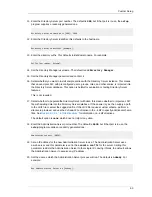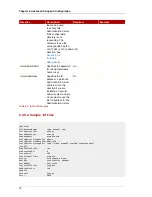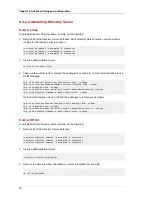
Chapter 6. Advanced Setup and Configuration
66
WARNING
Adding the client machine proxy IP address to the Administration Server creates a
potential security hole.
6.1.2. Configuring Proxy Servers for the Administration Server
If there are proxies for the HTTP connections on the client machine running the Directory Server
Console, the configuration must be changed in one of two ways:
• The proxy settings must be removed from the client machine. Removing proxies on the machine
running Directory Server Console allows the client to access the Administration Server directly. To
remove the proxy settings, edit the proxy configuration of the browser which is used to launch the
help files.
• Add the client machine proxy IP address to Administration Server's list of acceptable IP addresses.
This is described in
Section 6.1.1, “Configuring IP Authorization on the Administration Server”
.
WARNING
Adding the client machine proxy IP address to the Administration Server creates a
potential security hole.
6.2. Working with Directory Server Instances
6.2.1. Creating a New Directory Server Instance
Additional instances of the Directory Server can be created from the command line using the
setup-
ds-admin.pl
command. This offers the setup choices (express, typical, and custom) that are
described in
Chapter 3, Setting up Red Hat Directory Server on Red Hat Enterprise Linux
,
Chapter 4,
Setting up Red Hat Directory Server on HP-UX 11i
, and
Chapter 5, Setting up Red Hat Directory
Server on Sun Solaris
.
It is also possible to provide Directory Server parameters on the command line, so that the instance is
created with pre-defined defaults. For example:
setup-ds-admin.pl slapd.ServerPort=1100 slapd.RootDNPwd=itsasecret
When the installer runs, the Directory Server port default is
1100
, and the Directory Manager
password is
itsasecret
.
This script can also be run in silent mode, which means the setup program never opens; the Directory
Server instance values are taken from a specified file. For example:
setup-ds-admin.pl -s -f file.inf
-s
runs the script in silent mode, and
-f file.inf
specifies the setup file to use. Silent instance
setup and
.inf
files are described in
Section 6.3, “Silent Setup”
.






























